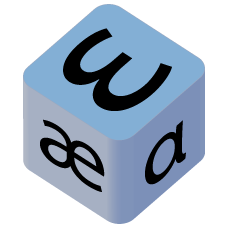

Agreed - it’s more like diversification, or “not putting all egg-users in the same basket-platform”.
The catarrhine who invented a perpetual motion machine, by dreaming at night and devouring its own dreams through the day.


Agreed - it’s more like diversification, or “not putting all egg-users in the same basket-platform”.


I am not sure, but I believe that this political abuse is further reinforced by something not mentioned in the text:
If I’m right this is breeding grounds for witch hunting: people don’t get why someone said something, they’re dishonest so they assume why, they bring on the pitchforks because they found a witch. And that’s bound to affect anyone voicing anything slightly off the echo chamber.
And I think that this has been going on for years; cue to “the Twitter MC of the day”. It would predate Musk, but after Musk took over he actually encouraged the witch hunts for his own political goals.


At least for my ex-fiancée it was about the link between husband and wife, plus tradition. It was basically “I’m married, you see?”. Just like a ring.
(We talked a fair bit about this stuff, as back then I was planning to add my maternal surname to my legal name. She was OK taking either surname.)


That’s good news. Odds are that some of those people will go back to closed media platforms after ~2 months; but the ones who stay help Mastodon and the Fediverse to grow.
Thanks for sharing this data - it’s great.
It actually makes sense; if cat urine contained ammonia the smell would be gone once you washed your cat’s impromptu litterbox, since ammonia is both volatile and highly soluble. And yet it keeps stinking - this hints that there’s something else there producing that ammonia by decomposition. (Probably proteins. Cats eat a lot more protein than we do.)
Note: chlorine gas is the one that leaks from an open bleach bottle, and gives it a distinctive smell. The ones created by reacting bleach with ammonia are chloramines, considerably more poisonous.


By “textual info” I mean plain language, like we’re using now. It’s theoretically possible to encode it in khipu, not just for Quechua but for any other language; but doing it in a practical way is another can of worms.
Instead what I think that they used is what the video calls a “semasiographic system” - there are standardised codes for almost everything worth registering (from a bureaucratic PoV), and the officer/kamayuq is expected to be able to decode it.
For a silly example using English, it would be a lot like writing “Jn Smth in ptt 20 mze 35” and then reading it as “John Smith stored 20kg of potatoes and 35kg of maize here”.


Ah, the khipu. The way that it represents numeric info is somewhat well understood already:
This might sound complicated but it’s really elegant, and representing the units in a different way allow you to cram multiple numbers into the same string.
So for example. Let’s say that you want to record 234 and 506 into a string. You’d do the following:
In some cases there might be geographical info in the khipu too, with numbers representing localities. Kind of like postal codes. The material of the string and the colour likely encode some info too, but AFAIK nobody knows it any more.
I’m almost sure that it doesn’t contain any sort of textual info, though. Like, something you can read. Classical Quechua had at least 17 consonants, this would be impractical to represent through knots, specially as Quechua tends towards large words.
My bet on both “paired” khipukuna is that one encodes income, another outcome. Kind of like double bookkeeping but for material.
I’m glad that I followed the source and found these:
I’m catching Reddit refugees in jars and filling them with leaves and sticks and yummy berries and then I’m shaking them vigorously before letting them back out, into the wild.
Do NOT feed the Reddit refugees!!! // They must learn to hunt on their own, lest they become dependent on the native Tumblr lifeform for food and shelter!!!
Redditfugees, you say? *grab shotgun* GET OFF MY LAWN!
And yes SCP writers often abuse the [REDACTED] thing. It was supposed to be used when not saying it chills you more than saying it, as it lets your imagination run wild and straight into the precipice.


I’m not sure if it’s because of Christianity.
Calling a language “of the people” pops up often across different cultures. Quechua for example does the same; the native name of the language is “runa simi”, it’s basically “people’s language”.
And in the case of the Germanic languages it’s so common that it was likely already in Proto-Germanic, thus probably older than the christianisation of those tribes.


I’m almost sure.
Your typical instance only defeds another as a last case scenario, due to deep divergences or because of blatantly shitty admin or user behaviour. But, past that, they’re still willing to let some shit to go through - because if you defederate too many other instances, with no good reason, you’re only hurting yourself.
That’s simply not enough to create those “corners”. Specially when all this “nerds vs. normies*” thing is all about depth - for example the normie wants some privacy, but the nerd goes all in, but they still care about the same resources.
*I hate this word but it’s convenient here.
I wish that I could build spaghetti bases, they look way better than a main bus. Sadly if I try to do it I’ll eventually get pissed at the disorder, and the “goddammit I need to pull a belt from A to B but I bloody can’t because everything is a mess here” following it.
That’s one of my cats.
The other wants to be cuddled 25h/day.
Sometimes ghosting is for people who value their own peace of mind, who predict that saying “sorry, I don’t want to be contacted further” will either cause drama or be ignored.
Plenty people. For stuff like
And I don’t feel bad for ghosting any of those. At all.


My two choices:
In both cases I want to be able to record everything people say. Preferably video, but audio is good enough. I just want to know better about languages of the past.
It’s kind of tempting to include 1450 Uruguay as a choice, since we barely know anything about the Charrúa language. However the Charrúa weren’t exactly friendly to outsiders, so this option would be only if neither side can interact with each other.


Originally Anglish was a lot like Siegfridisch - a single guy (Paul Jennings), replacing borrowings with new expressions coined from native words, just for fun. Jennings framed this as how English would be if the Normans were defeated in 1066, and he published it in a satirical magazine (Punch).
It does look more serious nowadays, though. Anglish started out in 1966, and the people picking the idea up focused a lot on making it more consistent. (And also because Jennings wasn’t being as playful as Zé do Rock.)
Kind of off-topic, but can you believe that practically nobody knows Zé do Rock here in Brazil? Even if a chunk of his stuff is written also in Portuguese. (He also plays with the language, his “brazileis” is… weird, but in a good way, to say the least.)


I get what you say, and I agree; but when it comes to the average user I wonder if they’ll even get it. They don’t think on the grounds of a “protocol” or a “platform”, it used to be “site” and now “app”. They do it even with email, of all things, even if it’s one of the oldest cross-platform protocols out there!


They tolerate each other enough to get each into a corner and not interact much.
And yet that is not what we see in the Fediverse. Those “corners” don’t exist here.


That is correct but it does not contradict anything that I said.
Even if Old Norse is Germanic, Old Norse words in English are still borrowings. “Borrowed” does not mean “not Germanic”, it means “not inherited”, both things don’t necessarily match.
This is easier to explain with a simple tree:

Only words going through that red line are “inherited”. The rest is all borrowing, the image shows it for Old Norse words but it also applies to French (even if French is related to English - both are Indo-European) or Japanese (unrelated) or Basque (also unrelated) etc. words.
But I digress. In Anglish borrowings from other Germanic languages should still get the chop, as seen here and here.
From a quick glance The Anglish Times does a good job not using those borrowings. The major exception would be “they”, but it’s rather complicated since the native “hīe” became obsolete, and if you follow the sound changes from Old English to modern English it would’ve become “she”, identical to the feminine singular. (Perhaps capitalise it German style? The conjugation would still be different.)
They evolved. Just like they would inside your body.
…in Brazil those are sold in skewers, people call them kafta. And yes, if you don’t take care while shaping them, they’ll look, well… not really appetising.